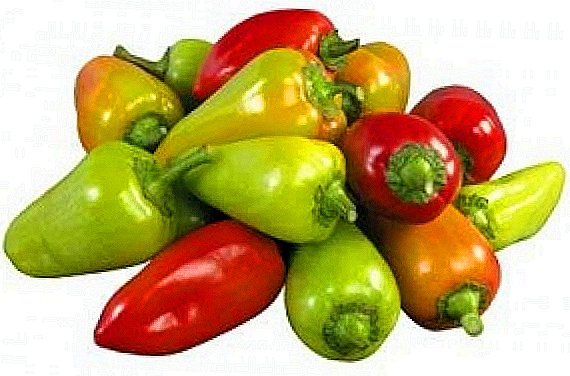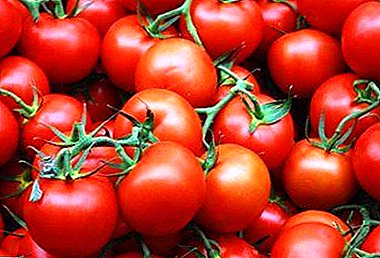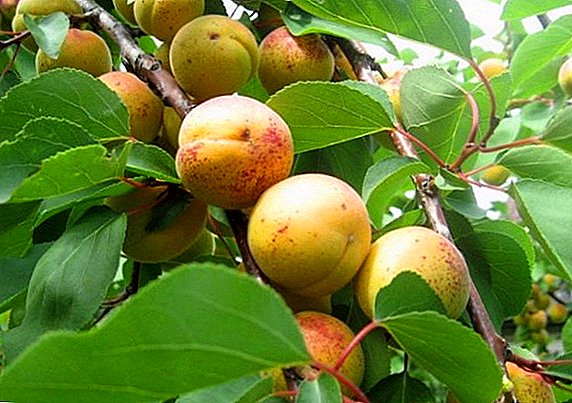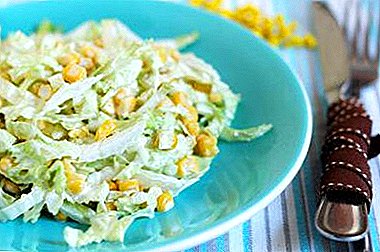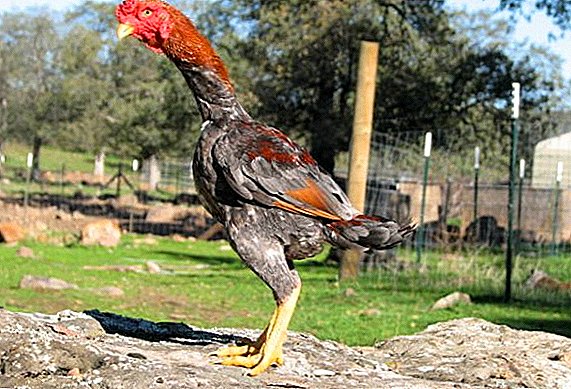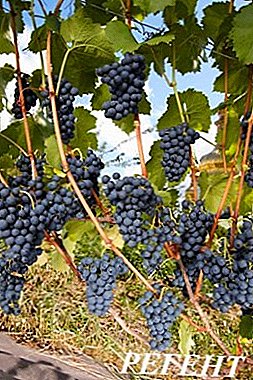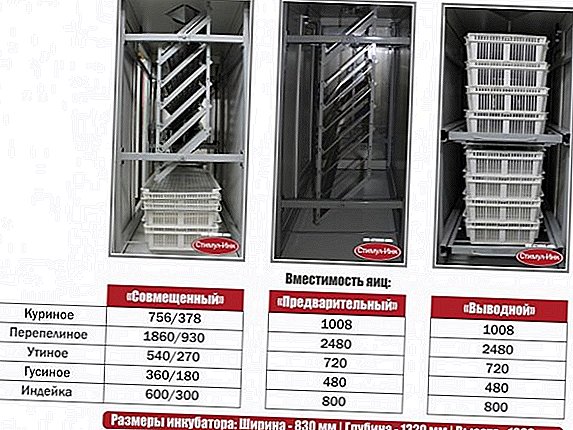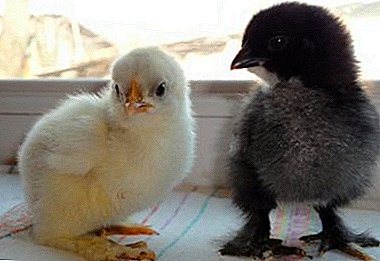
The Kokhinhin breed was not previously known in Russia, however, it has recently gained popularity. Cochinquins are grown for decorative purposes as well as for very tasty meat. Their homeland is China. Poultry farmers lovers this type of hens attracts with its pedigree physiological characteristics: endurance, the ability to rush even in cold weather.
Breed description
This cross is characterized primarily by the size of the bird. This type of chickens has a broad back and chest, with very developed muscles. A pronounced bend is observed when passing from the shoulders to the neck. The neck is short. The head is small. The beak is small, yellow. The head is decorated with a small comb. Eyes have a reddish color.
 Roosters have a very beautiful and bright plumage. From their tail it is impossible to tear off a look. Chickens have a shorter neck than roosters. They are shorter. The legs are rather short, but very strong. The shins are muscular, well developed. Feet covered with feathers completely. The wings are medium in size. Their tips are located under the tail plumage.
Roosters have a very beautiful and bright plumage. From their tail it is impossible to tear off a look. Chickens have a shorter neck than roosters. They are shorter. The legs are rather short, but very strong. The shins are muscular, well developed. Feet covered with feathers completely. The wings are medium in size. Their tips are located under the tail plumage.
To maintain balance, the body leans forward. From the side it seems that the chicken is very massive and stocky. Breed kohinhin is meat. Chickens reach weights up to 4 kg, roosters up to 5 kg.
Naturally, egg production is low: 100-110 eggs a year will get a master from one hen. Egg weight 50-60 grams. Shell yellow-brown color. The yolk is bright orange. This cross is very resistant to external weather conditions, especially to cold. Farmers have noticed that at low temperatures egg production increases slightly.
In general, chickens have a very calm character, do not need large walking areas, can easily live in cages. High fencing is also not needed.
ATTENTION! The peculiarity of the chickens of this cross is that they hatch naked. Then their plumage is very slow. That is why they need to be grown in a warm place.
What should be the weight of the weekly and monthly chicks?
At the birth of a chicken, its weight, as a rule, is about 35 g. With good care and nutrition, after a week a chicken can gain up to 200 g of weight. What should be the weight of the monthly chicks? At this age, they can reach from 800 to 1000
A photo
And so look at the photos of the chickens of this breed.



Conditions of detention
After hatching, chicks are left for a while with a layer or in an incubator. It all depends on the type of production. They need to dry. Only after that they can be moved to another warm place with a litter (paper, fabric).
Remember! In the first hours of life, as well as the next day, it is important not to catch cold feet of babies.
Unlike adults, which are completely unpretentious to the conditions of detention, the chicks require more attention. Given the lack of exertion, it is important to observe a warm temperature. In the first weeks of life you need to provide from +30 to + 32 ° C.
Then you can reduce the temperature to +20 ° C. To maintain the temperature, fireplaces and incandescent lamps are most often used. The first day after hatching, it is necessary to maintain light illumination for 24 hours. In the following days, the light day should be reduced by 1 hour. So you need to continue until light day reaches 17 hours.
 Chicks need to be kept in clean cages. It is necessary to provide airing. Fresh air is very useful for the fragile lungs. Nestlings, unlike adult relatives, need open space. They need to run and frolic. They like to rake straw, peck at it, look for something tasty. However, if this condition cannot be met, it is not a big obstacle to their development.
Chicks need to be kept in clean cages. It is necessary to provide airing. Fresh air is very useful for the fragile lungs. Nestlings, unlike adult relatives, need open space. They need to run and frolic. They like to rake straw, peck at it, look for something tasty. However, if this condition cannot be met, it is not a big obstacle to their development.
The cage must be equipped with additional fences so that there are no small aisles. An adult hen will not pass through the netting net, and the chick will easily do it. Moreover, if cats, dogs and other animals that may attack tiny creatures live nearby, you will have to equip them with additional defenses.
Feeding and watering
If the diet of chickens is chosen correctly, then you will definitely get the desired result - quick weight gain. In the first days it is necessary to offer chickens small wheat groats, corn, millet, and egg. You can include in the diet is not a lot of cheese. If you give oats, wheat, barley, then you need to remove the film and finely chop.
Important! The film of grain chicks is not digested. On the third day it is important to add greens to the diet at the rate of 6 g per 1 chicken. It can be alfalfa, nettle, dandelion leaves.
On the fifth day, you can offer a carrot at the rate of 5 g per individual. It also needs to be finely grated. You can already give herbal flour. From the tenth day it is necessary to increase the volume of grain. It is already possible to offer fish waste, chalk, crushed shells at the rate of 5 g each.
Gradually bring this figure to 10 g. 17 percent of dry feed should be cake and meal. They contain proteins of plant origin. Starting from the twentieth day, you can replace the fifth part of the grain with boiled potatoes. Given the age category, you must comply with the number of feedings.
 So, in the first week of life, chickens must be fed up to 8 times. On the second - 6 times. On the third 4 times. Starting from the second month of feeding, it should be doubled - in the morning and in the evening. Grain volume should be about 60 percent of the total feed.
So, in the first week of life, chickens must be fed up to 8 times. On the second - 6 times. On the third 4 times. Starting from the second month of feeding, it should be doubled - in the morning and in the evening. Grain volume should be about 60 percent of the total feed.
This is a meat breed of chickens, so it is very important to include in the diet of young cattle up to 16 weeks. Feeders should be comfortable, with small sides so that the chicks can get food.
As for the water, then everything is simple. Fresh water is required, not higher than 30 ° C. One vacuum drinker is enough for 50 chicks. It is important to put the drinker in an accessible, lighted area. Some of the water can be replaced with fresh milk whey. She is very helpful. Often there are situations in which some chicks begin to lag behind their fellows. Less mobile, eat badly.
In these cases, you need to pay extra attention to them: either separate them into a separate cell, or regularly feed and pipette yourself. They need to give mashed milk with boiled egg. This protein mixture is very good for them. Practice shows that the majority of lagging chicks with extra care get very fast and catch up on the development of the rest.
Clean water and food are vital for chickens. Feeders and drinkers should be well washed daily. Can be processed with a 5% formalin solution.
Yesterday's feed needs to be eliminated in order to avoid its decay, and therefore the reproduction of various diseases.
Features of growing
Statistics show that with normal care, the survival rate of chicks is quite high and reaches from 90 to 95 percent. Given that the metabolism of the Cochinha slowed down (as with all crosses of the meat direction), it is important that the chicks do not overeat.
 It is necessary to give the established norms of food otherwise obesity in the future can not be avoided. If you notice that the chicks have started intensive plumage, be sure to enter the pumpkin and cabbage in the diet. They will help the plumage, and the pumpkin will allow to overcome the worms. You can also add gravel to the feeders 1 time per week at the rate of 2 g per chicken. An excellent prophylactic and immunostimulating agent is a solution of potassium permanganate. It should be given up to three times a week.
It is necessary to give the established norms of food otherwise obesity in the future can not be avoided. If you notice that the chicks have started intensive plumage, be sure to enter the pumpkin and cabbage in the diet. They will help the plumage, and the pumpkin will allow to overcome the worms. You can also add gravel to the feeders 1 time per week at the rate of 2 g per chicken. An excellent prophylactic and immunostimulating agent is a solution of potassium permanganate. It should be given up to three times a week.
Note! It is important to make a fresh solution every time. If possible, starting from the fifth day of life, you can add vitamins to the birds ’diet. Very useful vitamins A, E, D.
You can also prepare fortified mixture for growing birds.
The recipe is:
- 0.5 liters of sunflower oil;
- 2 tsp. vitamin D2; - 2 tsp. vitamin E;
- 2 tsp. vitamin A.
Mix all. Be sure to keep the resulting mass in the refrigerator. Vitamins can be purchased at the pharmacy in the form of oils. 1 kg of feed takes 1 tsp. the resulting oil. For more efficient growth Cochin can feed them with industrial feed. They are better balanced and give more quickly the desired result. These feeds contain all the vitamins and proteins necessary for the body of meat breed of chickens.
Healthy young stock is the key to growing strong adult chickens. Therefore, it is important from the first days of life to provide good care, an established regimen and a balanced diet. You can not introduce new food ahead of time. We need to wait for the necessary stage of development of the gastrointestinal tract of chickens.
It is necessary to comply with the established amounts of food, since the Cochin tend to be obese, and we need high-quality meat. This breed of birds is not picky compared to many other crosses, so a little diligence and dedication and you will be able to achieve the desired result.


